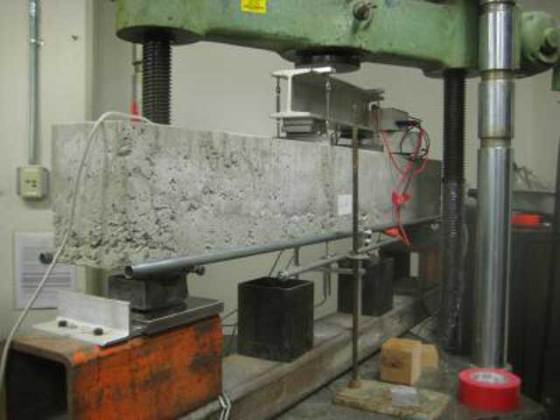‘Sensing skin’ could be used to detect potential cracks in structures
 Unlike other researchers who are developing self-repairing materials, civil engineers at MIT cooperated with physicists at the University of Potsdam, Germany, went in a different direction and developed a flexible skin-like fabric with electrical properties which could be applied to areas of structures where cracks are likely to appear and be used to detect cracks when they occur.
Unlike other researchers who are developing self-repairing materials, civil engineers at MIT cooperated with physicists at the University of Potsdam, Germany, went in a different direction and developed a flexible skin-like fabric with electrical properties which could be applied to areas of structures where cracks are likely to appear and be used to detect cracks when they occur.
Sensing skin is easy to install – you just need to glue it to the surface of a structure in the length and width which is being monitored. The rectangular patches in the skin can be arranged in different ways, in order to detect diverse types of cracks which are likely to form in a particular part of a structure. For example, a sensing skin formed of diagonal square patches would be best at detecting cracks caused by shear (the movement in different directions of stacked layers), while the horizontally arranged patches would be best at detecting the cracks caused when a horizontal beam sags.
The formation of a crack causes a tiny movement in the concrete under the patch, making it change the capacity of the sensing skin. A computer system attached to the sensing skin sends the capacity readings of each patch and detects any difference among neighboring patches every 24 hours. The results enable it to detect a potential flaw within a day and point to its exact location.
“The sensing skin has the remarkable advantage of being able to both sense a change in the general performance of the structure and also know the damage location at a pre-defined level of precision”, said Simon Laflamme PhD, who started this research while he was a graduate student in the MIT Department of Civil and Environmental Engineering (CEE). “Such automation in the health monitoring process could result in great cost savings and more sustainable infrastructures, as their lifespan would be significantly increased as a result of timely repairs and reduced number of inspections.”
The researchers originally tested their idea using a commercially available, inexpensive stretchy silicon fabric with silver electrodes. While this worked in some of the lab experiments performed on both small and large concrete beams under stress, the material showed limitations in its installation because it was too thin and flexible.
In order to solve that problem, they developed a prototype of a sensing skin made of soft stretchy thermoplastic elastomer mixed with titanium dioxide that is highly sensitive to cracks, with painted patches of black carbon that measure the change in the electrical charge of the skin.
“Many of the types of infrastructures graded by the ASCE are made of concrete and could benefit from a new monitoring system like the sensing skin, including bridges which received a C grade, and dams and schools, which earned Ds”, said Professor Jerome Connor of MIT CEE. “The safety of civil infrastructures would be greatly improved by having more detailed real-time information on structural health.”
For more information, you can read the article published in the Journal of Materials Chemistry named: “Strongly enhanced sensitivity in elastic capacitive strain sensors”.










Leave your response!